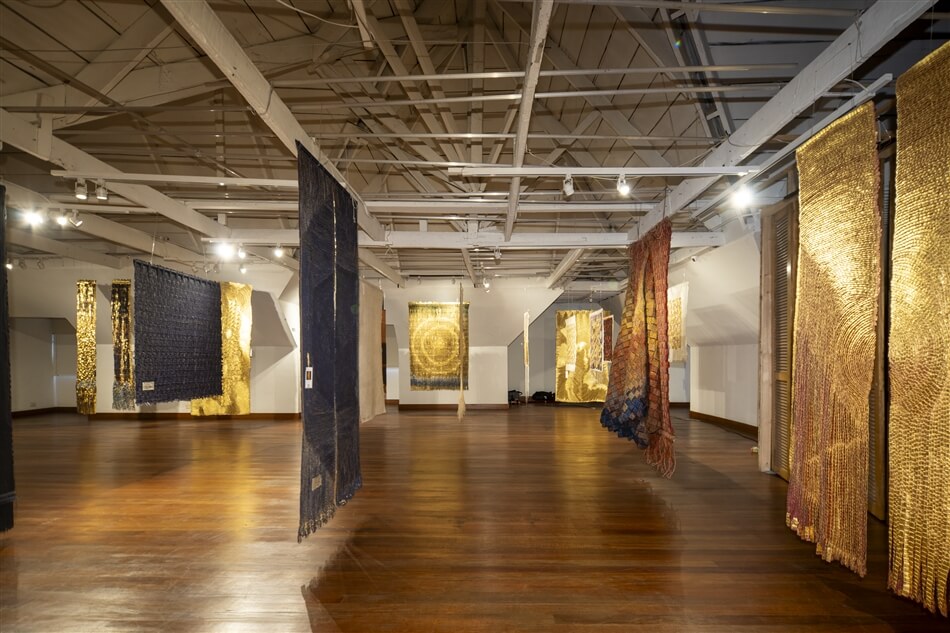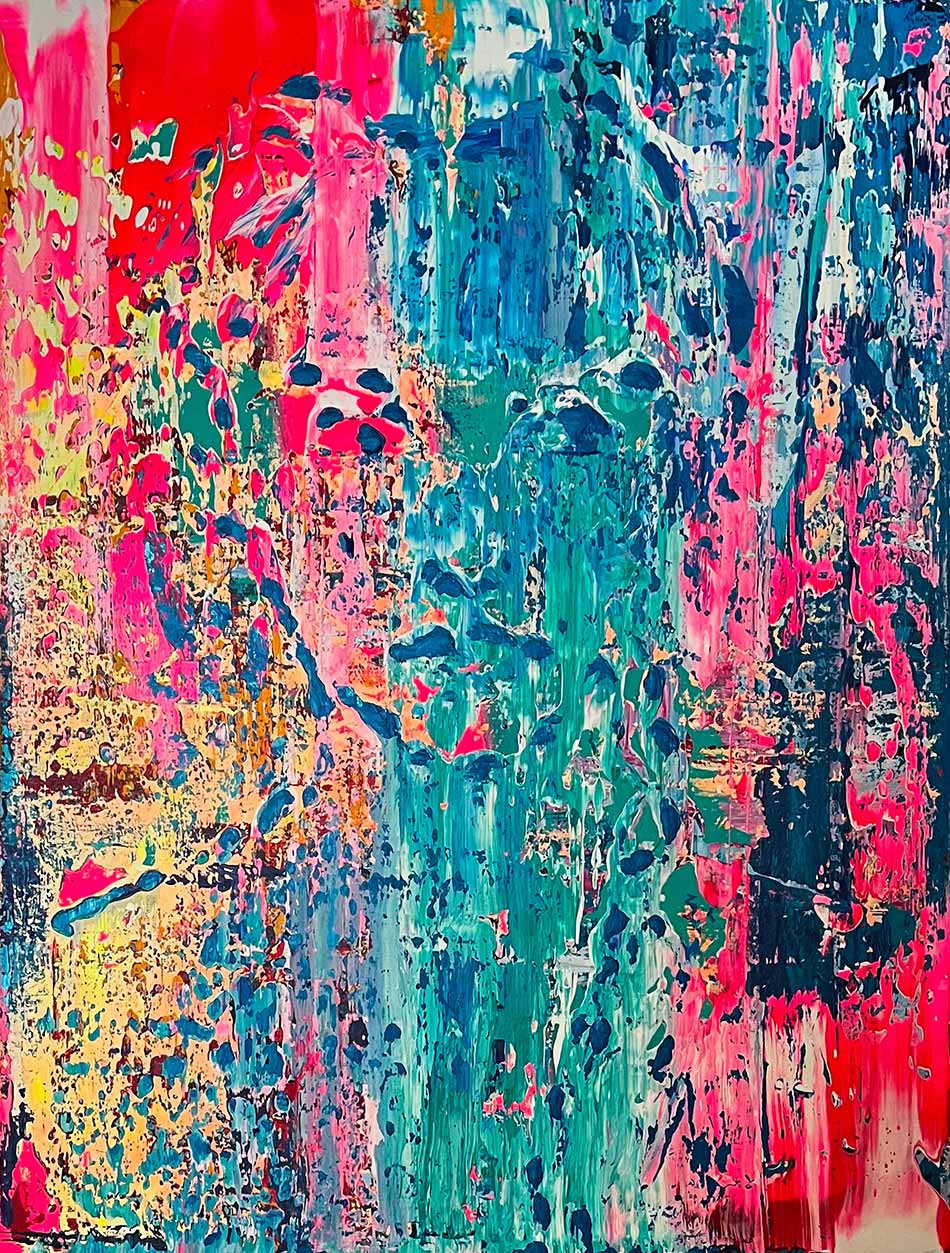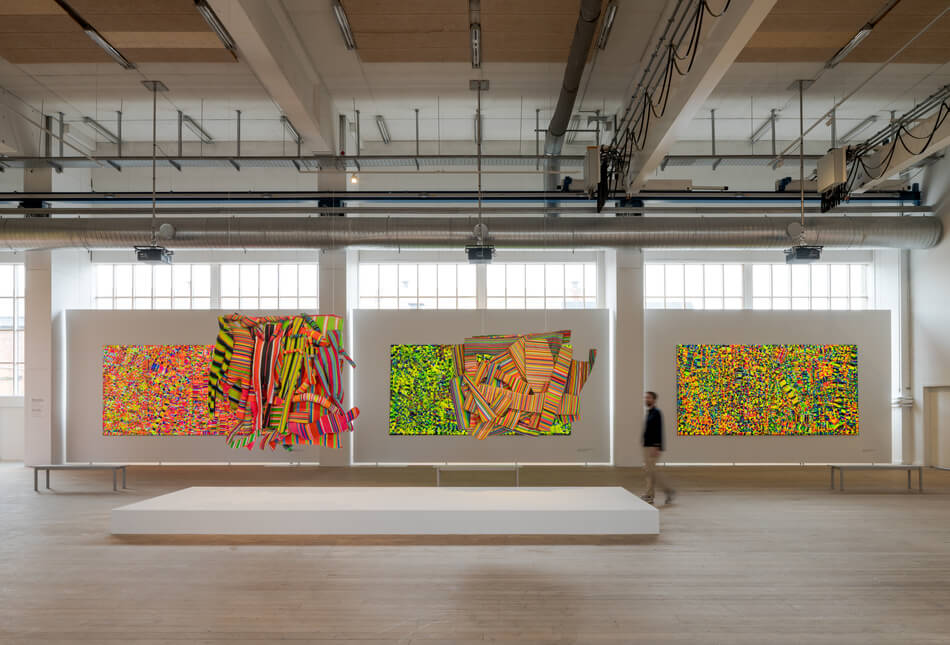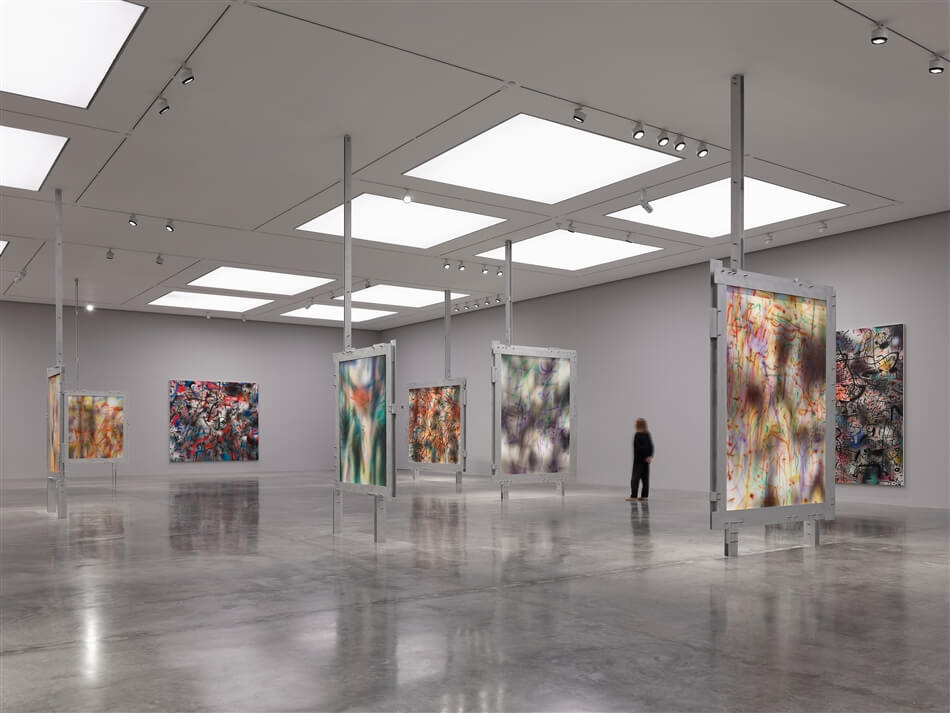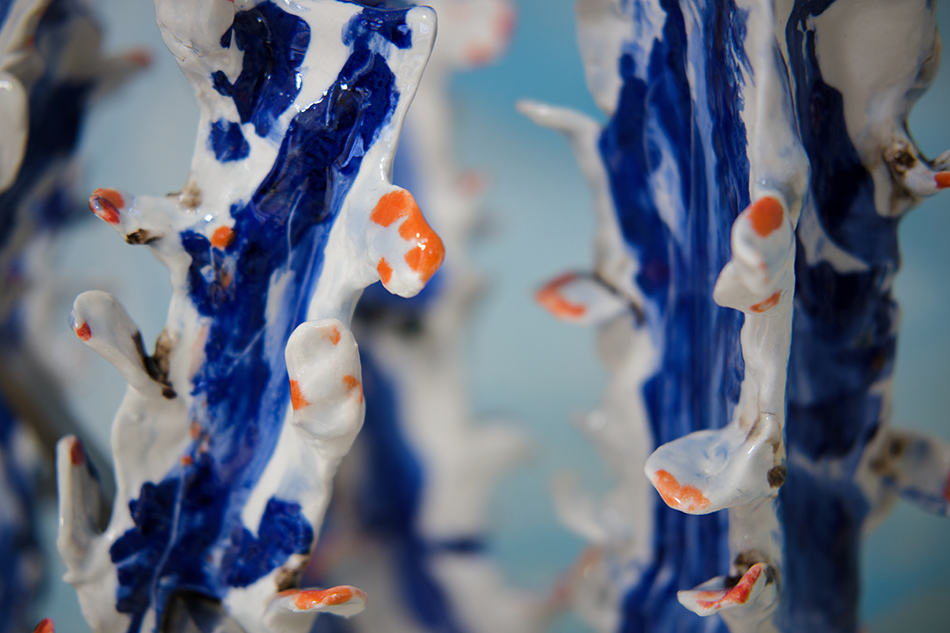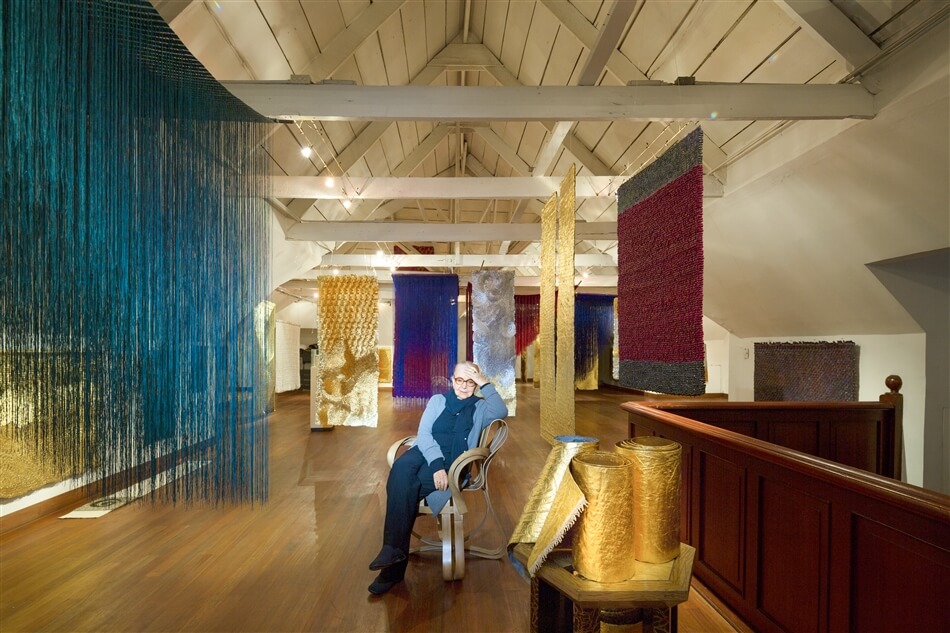
Olga de Amaral
Fondation Cartier pour l’art contemporain, Paris
October 12, 2024 – March 16, 2025
From October 12, 2024, to March 16, 2025, the Fondation Cartier pour l’art contemporain is presenting the first major retrospective in Europe of Olga de Amaral, a key figure of the Colombian art scene and of Fiber Art. The exhibition brings together nearly ninety works made between the 1960s and now, many of which have never been shown before outside of Colombia. Beyond the vibrant gold leaf pieces for which the artist is renowned, the exhibition reveals her earliest explorations and experimentations with textiles, as well as her monumental works.
Since the 1960s, Olga de Amaral has been expanding the boundaries of the textile medium, continually experimenting with different materials (linen, cotton, horsehair, gesso, gold leaf, palladium) and techniques: she weaves, knots, braids, and interweaves threads to create monumental three-dimensional pieces. Her unclassifiable work draws equally from the Modernist principles that she discovered at the Cranbrook Academy of Art in the United States, and the vernacular traditions of her country, as well as pre-Columbian art. Having presented six works from the Brumas series as part of the Southern Geometries exhibition in 2018, the Fondation Cartier is now retracing Amaral’s entire career, celebrating the figure who helped spark a true revolution in the textile arts.
Despite her international renown, Amaral’s work has rarely been shown in Europe. This exhibition offers a fresh and exhaustive perspective on her career and unveils the full complexity of her artistic practice. Without adopting a strictly chronological order, it shines a light on the different periods that have characterized her artistic career: from her formal explorations (use of the grid colors) to her experimentations (with materials and scale), as well as the influences that have nurtured her work (constructivist art, Latin-American handicrafts, the pre-Columbian era).
With this exhibition, the Fondation Cartier foregrounds the boldness of textile art, long marginalized due to the perception of it as a decorative art essentially practised by women. Resolutely entwined with the dynamics of post-World War II abstract art, Amaral’s ambitious production deviates from the conventional framework of traditional tapestry. The retrospective notably showcases her vital contribution to the artistic avant-garde of the 1960s, 70s and 80s.
During the year she spent at Cranbrook Academy (1954-1955) in the United States, Amaral developed a deep interest in color and undertook radical experimentations with material, composition and geometry. Upon her return to Colombia in 1955, she combined the techniques she had studied with her knowledge of her country’s traditional textiles, in a spontaneous, expressive style inspired by the history and landscapes of her native soil: the high plateaus of the Andes, valleys and vast tropical plains, from which her works drew in form and tone. This is particularly seen in two major series that feature in the exhibition: the Estelas (Stars) and the Brumas (Mists).

Begun in 1996, the Estelas take the form of gilded stelae composed of a rigid woven cotton structure covered in a thick layer of gesso, then acrylic paint and gold leaf, concealing all trace of the fabric. In the 1970s, through her friend, the ceramicist Lucie Rie, she discovered the Japanese technique of kintsugi, which consists of repairing objects by highlighting their cracks and areas of breakage using gold powder. This metal quickly became one of her favorite materials, allowing her to transform the textile into a gleaming surface, diffracting and reflecting light. In 2013, Amaral began a new series titled Brumas, consisting of diaphanous three-dimensional textiles that move slightly and show simple geometric patterns painted directly on the cotton threads. They evoke a cloud, a misty rain of pure color that the artist invites us to walk through.
To design the exhibition space, the French-Lebanese architect Lina Ghotmeh immersed herself in Amaral’s sources of inspiration: on the ground floor of Jean Nouvel’s building, surrounded by the garden by Lothar Baumgarten, she created a landscape of slate stones connecting the interior, exterior, and the works, as though they were set in a stony, rugged landscape. On the below-ground level, the architect reuses the spiral motif found in some of Amaral’s works, to guide visitors through an enveloping space in which the artist’s explorations gradually emerge.

Playing with contrast, scale and the position of the works, grazing the ground or hanging from the ceiling, Ghotmeh tells the story of the artist’s work through her own weaving of the Fondation Cartier’s space. She adopts an approach that she refers to as «archaeology of the future» and draws her inspiration from the memory of the site and the works to immerse visitors into a timeless moment, rich in emotions and sensations.
more. www.fondationcartier.com

Are you an artist, architect, designer? Would you like to be featured on ITSLIQUID platform? Send an e-mail to info@itsliquid.com or fill the form below

